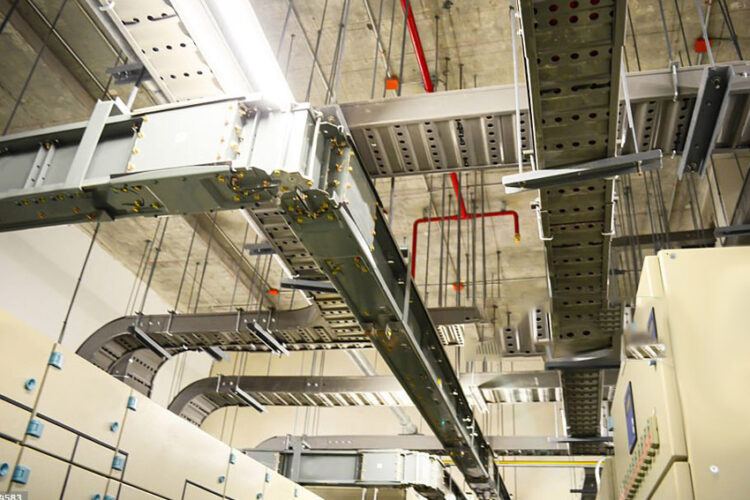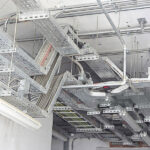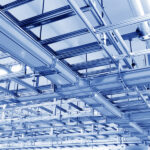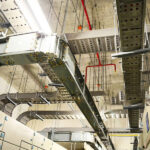
Cable Tray and Accessories
Cable trays and accessories are essential components used in electrical and data communication installations to support, organize, and protect cables and wires. They are widely used in commercial buildings, industrial facilities, data centers, and various other applications to manage cable systems efficiently and ensure safety and reliability.
- Cable Trays: Cable trays are rigid structures used to support and organize various types of cables and wires in a horizontal arrangement. They come in different materials, including steel, aluminum, and fiberglass. The main types of cable trays include:
- Ladder Tray: Resembles a ladder with two longitudinal side rails connected by rungs to form a series of compartments for cables.
- Solid Bottom Tray: Features a solid base, providing additional support and protection for cables.
- Wire Mesh Tray: Comprises welded wire mesh forming a grid pattern, allowing for easy cable routing and visibility of cables.
- Cable Tray Accessories: Various accessories are used in conjunction with cable trays to enhance their functionality and ensure proper cable management. Some common cable tray accessories include:
- Cable Tray Covers: Provide protection to the cables from dust, debris, and other external elements.
- Cable Tray Clamps: Securely hold cables in place within the tray to prevent movement or sagging.
- Horizontal and Vertical Bends: Used to change the direction of the cable trays around corners and obstacles.
- Reducers and Expanders: Allow the transition between cable trays of different sizes.
- Splices and Connectors: Used to join multiple sections of cable trays together.
- Mounting Brackets and Supports: Securely attach cable trays to walls, ceilings, or floors.
- Cable Tray Installation: Cable trays can be installed overhead, on walls, or under floors, depending on the specific application and building layout. Proper installation ensures that cables are safely supported, organized, and protected while allowing for easy access and maintenance.
- Advantages of Cable Trays: Cable trays offer several advantages over traditional conduit systems:
- Cost-effective: Cable trays are generally more cost-effective compared to conduit installations.
- Flexibility: They allow for easy additions or removal of cables without major modifications.
- Ventilation: Cable trays with open designs facilitate natural ventilation, reducing the risk of cable overheating.
- Cable Management: Cable trays organize and separate different types of cables, reducing the risk of signal interference.
- Fire Safety: Properly designed and installed cable trays can aid in fire containment and prevent the spread of flames.
- Cable Trays: Cable trays are rigid structures used to support and organize various types of cables and wires in a horizontal arrangement. They come in different materials, including steel, aluminum, and fiberglass. The main types of cable trays include:
Overall, cable trays and accessories are crucial elements in modern electrical and data communication systems, providing a safe, efficient, and organized solution for managing cables and wires in various environments.


